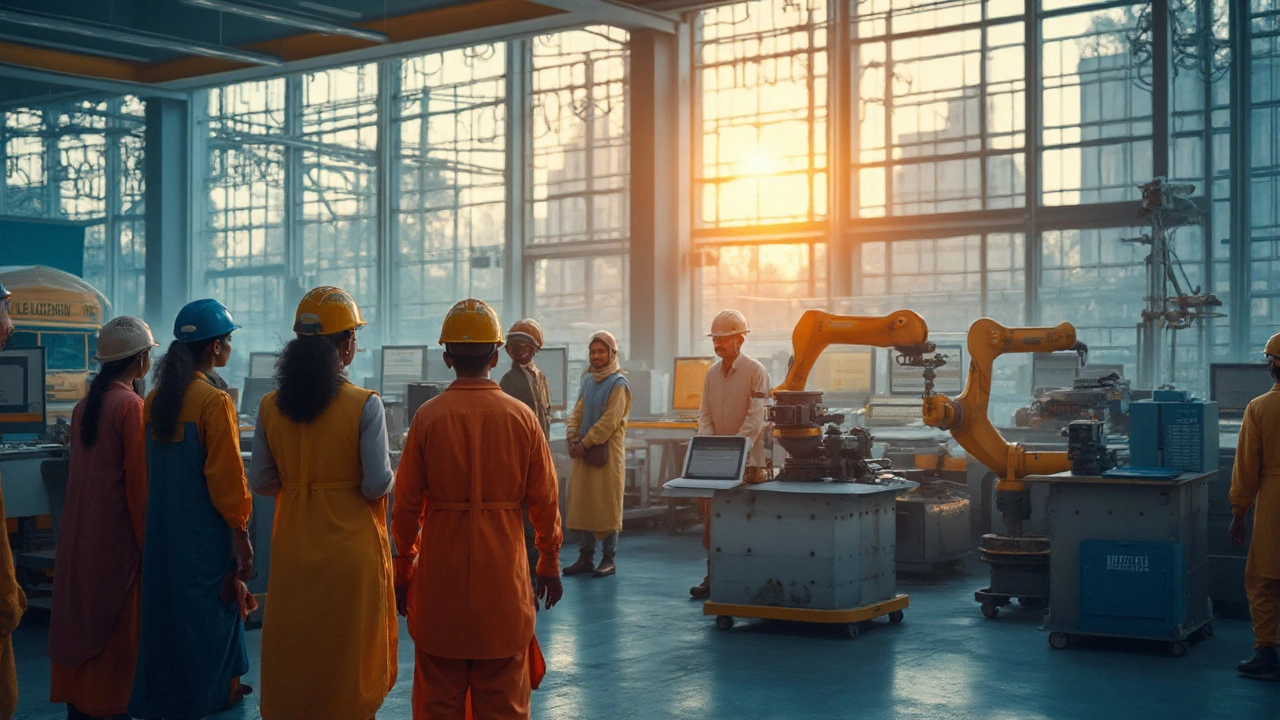- Textile Capital of India: Where the Fabric Magic Happens May 27, 2025
- Does Your Netflix India Subscription Work in the USA? Everything You Need to Know Jun 25, 2025
- Why Small Scale Businesses Fail: Top Reasons Nobody Tells You Jun 23, 2025
- Top Manufacturing Business Opportunities to Thrive in 2025 Jan 1, 2025
- Asia's Largest Earth Moving Equipment Manufacturer: The Big Player in India May 7, 2025
US Manufacturing Jobs: How to Get Hired and What to Expect
If you’re looking for steady work that pays well and offers room to grow, manufacturing jobs in the United States are worth a look. From auto plants in the Midwest to tech‑driven factories on the West Coast, there’s a spot for people with many different skill levels.
Where the Jobs Are – Top States and Industries
Some states consistently lead the hiring charts. Michigan and Ohio dominate auto and heavy‑equipment production. Texas and Alabama are hot for aerospace and energy‑related parts. The Pacific Northwest, especially Washington, has a surge in electronics and renewable‑energy assembly. If you live near any of these areas, chances are local recruiters are already looking for people just like you.
Key industries hiring now include:
- Automotive manufacturing – assembly line work, CNC machining, quality control.
- Food processing – packaging, equipment operation, sanitation.
- Advanced electronics – PCB assembly, testing, clean‑room work.
- Steel and metal fabrication – welding, forging, material handling.
- Renewable‑energy components – turbine parts, solar‑panel assembly.
What Employers Want – Skills, Certifications, and Experience
Most factory jobs start with a high school diploma or a GED. From there, a few practical skills boost your chances:
- Basic machine operation – knowing how to run a lathe, press, or conveyor.
- Safety training – OSHA 10‑hour certification is often a must.
- Reading technical drawings – helps you understand parts and tolerances.
- Teamwork and communication – factories run on coordinated effort.
Many employers also value short‑term certifications like CNC programming, forklift operation, or Lean Six Sigma green belt. If you have those, put them front and center on your resume.
For entry‑level roles, on‑the‑job training is common. You’ll learn the specific processes of the plant while you work, and you’ll often earn a higher wage once you’re certified on the equipment you operate.
How Much You Can Earn
Pay varies by state, industry, and experience. The average hourly wage for manufacturing workers in the U.S. sits around $22‑$24. Skilled CNC operators can pull $30‑$35 per hour, while electricians and maintenance techs often hit $35‑$45. Overtime, night‑shift differentials, and shift‑bonus programs add extra cash.
Benefits are another big plus. Many large manufacturers offer health insurance, retirement plans, tuition assistance, and even tuition reimbursement for further technical training.
Landing the Job – Practical Steps
1. Upgrade your resume – list any certifications, safety courses, and hands‑on experience first. Use bullet points that show measurable results, like “Reduced line downtime by 12% through quick‑change tool implementation.”
2. Use job boards that specialize in manufacturing – sites like ManufacturingJobs.com, Indeed’s “Industrial” filter, and local union listings often have the freshest openings.
3. Network locally – attend job fairs at community colleges, join local trade groups, or connect with former coworkers on LinkedIn. A referral can move you to the top of the pile.
4. Prepare for the interview – expect questions about safety, teamwork, and problem‑solving. Practice describing a time you fixed a jammed machine or suggested a process tweak that saved time.
5. Follow up – send a brief thank‑you email within 24 hours, restating your interest and a key skill you bring.
Future Outlook – Why Manufacturing Is Still Growing
Automation is reshaping the sector, but it’s also creating new roles that need human oversight. Robo‑cutter programming, data‑analysis for production lines, and maintenance of AI‑driven equipment are in demand. The U.S. government’s “Buy American” initiatives and the push for greener manufacturing further boost hiring.
Bottom line: if you’re ready for a stable paycheck, opportunities to learn new tech, and a clear career path, US manufacturing jobs are worth pursuing. Start with a safety certification, polish your résumé, and target the states and industries that match your skill set. You could be on the production floor— or behind the next big innovation—sooner than you think.
How Manufacturing Helps American Society in 2025: Jobs, Innovation, Security, Community
- Aarav Sekhar
- Sep 11, 2025
Clear, current answer to how U.S. manufacturing benefits society-jobs, innovation, security, climate, and community-with data, checklists, and practical next steps.
